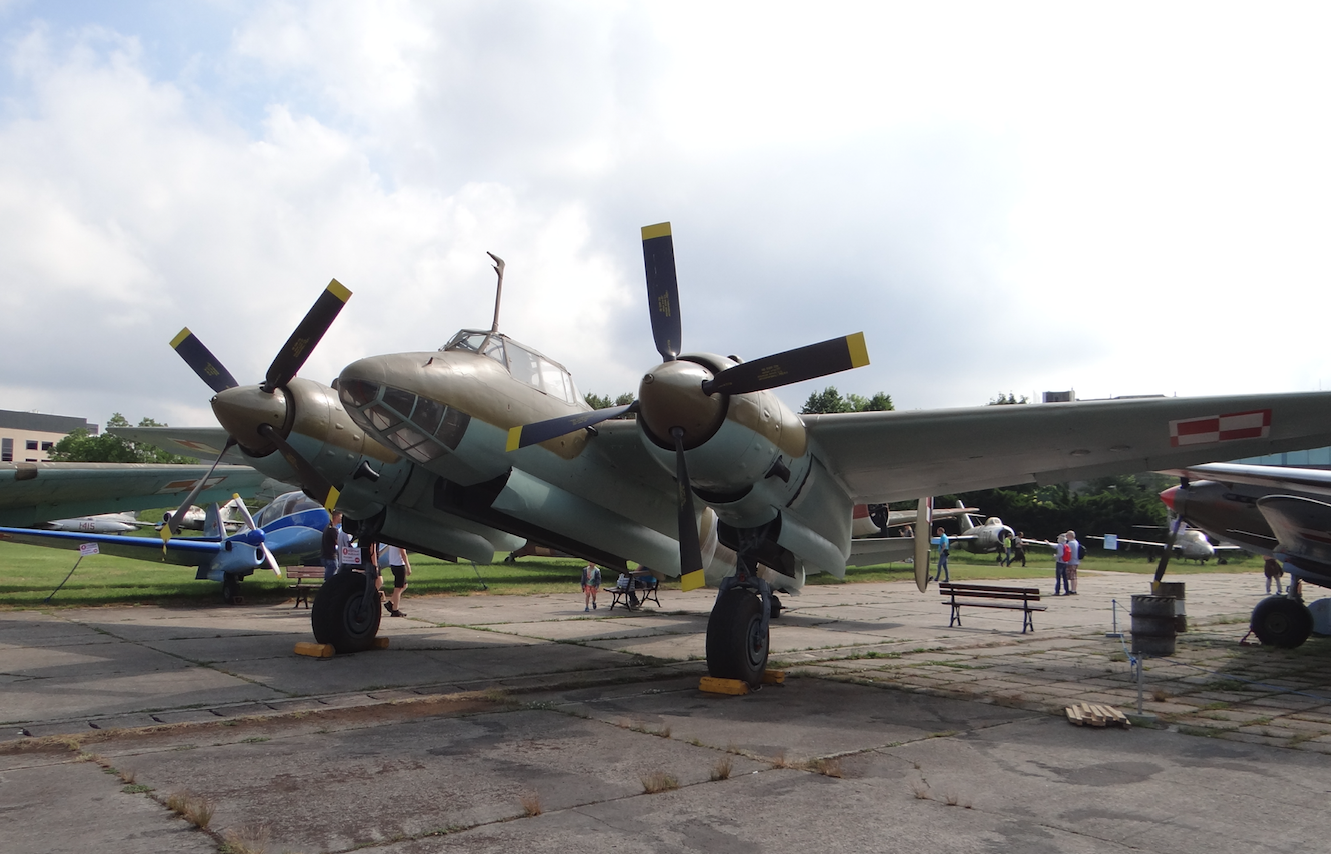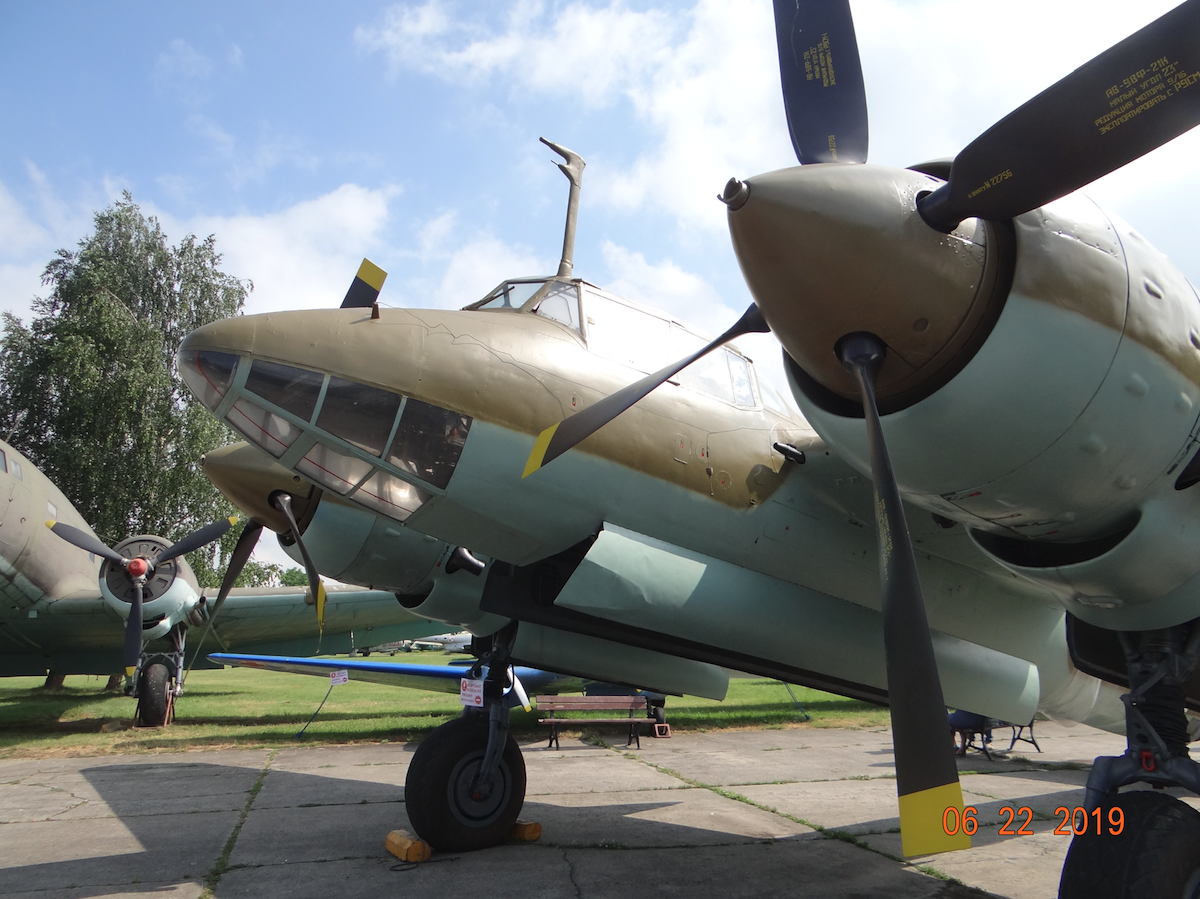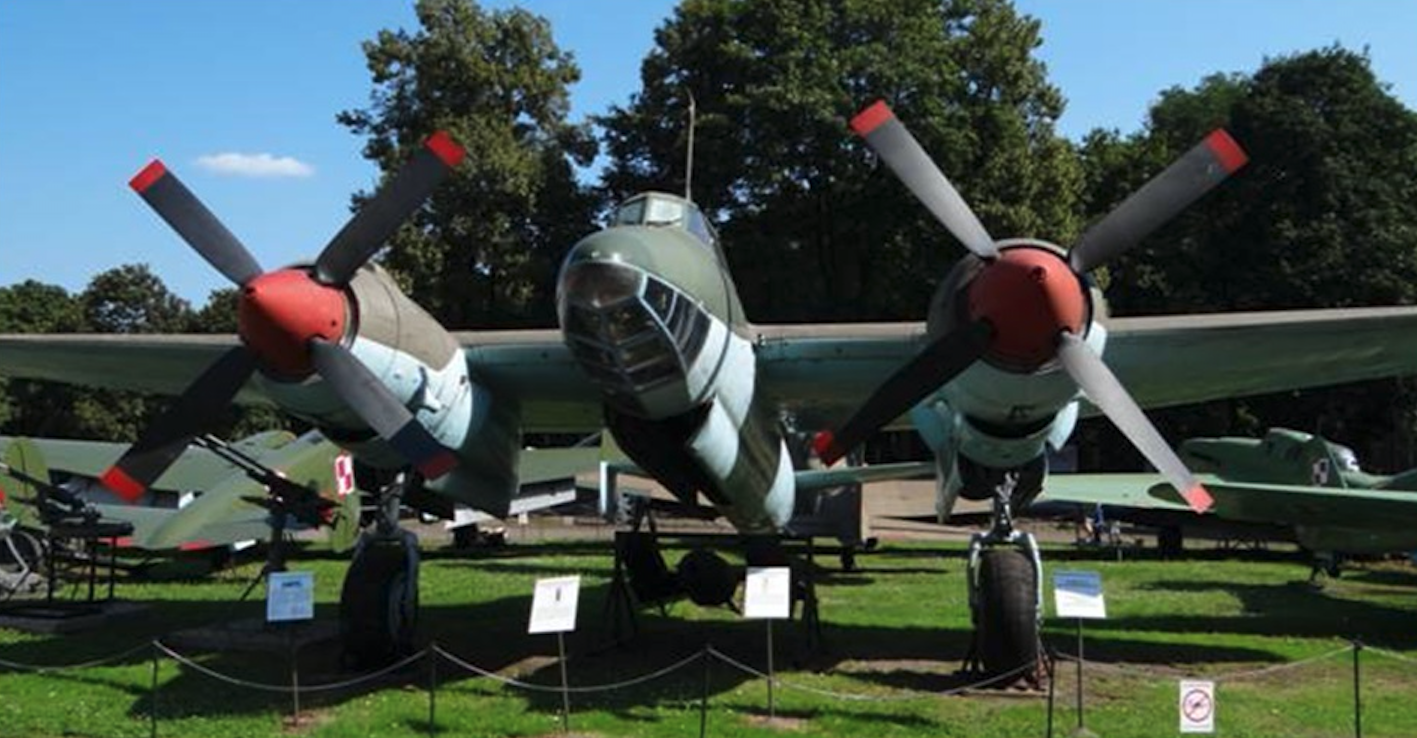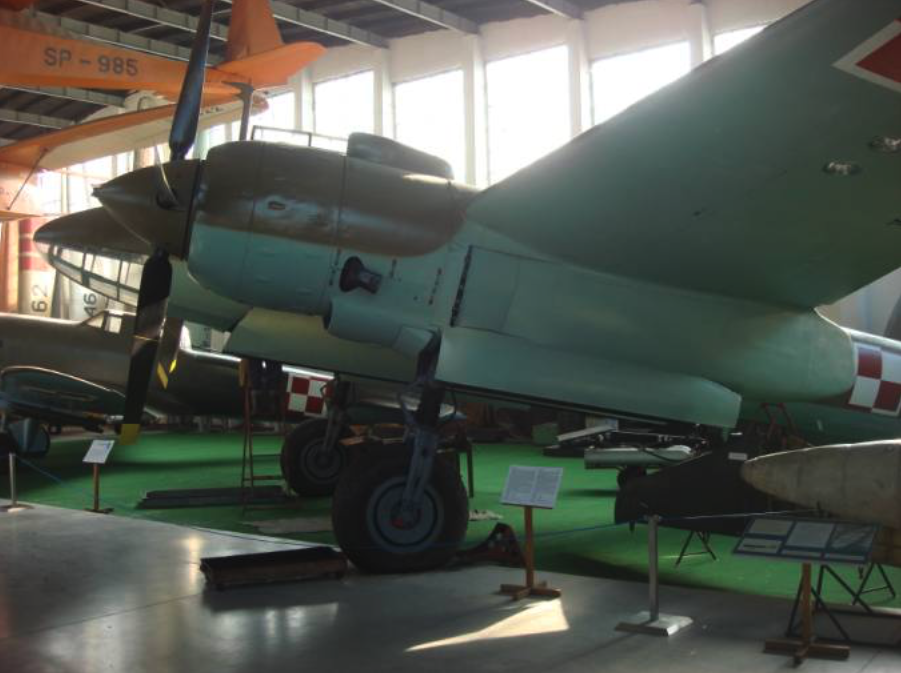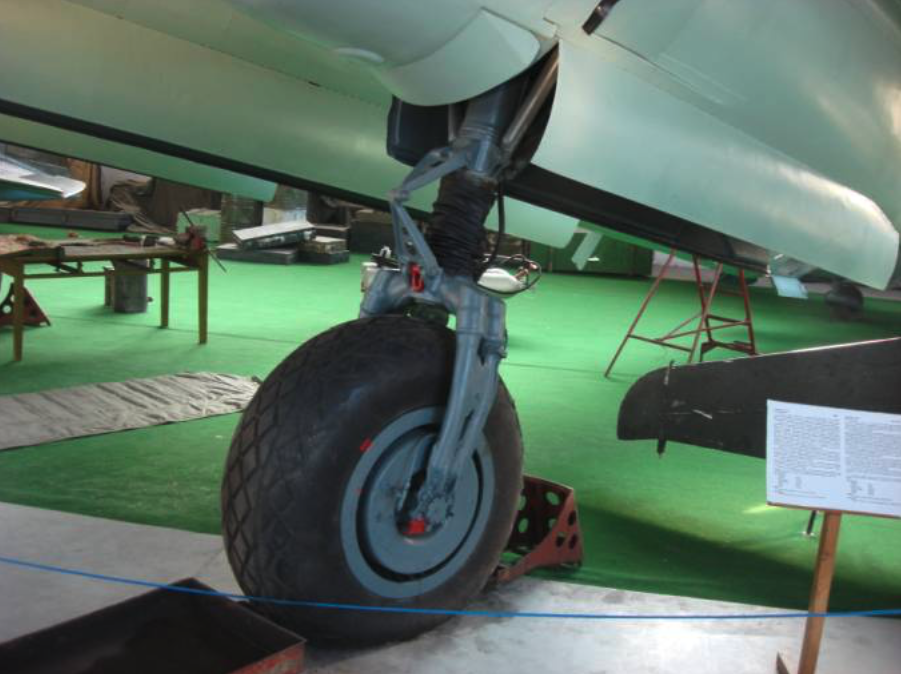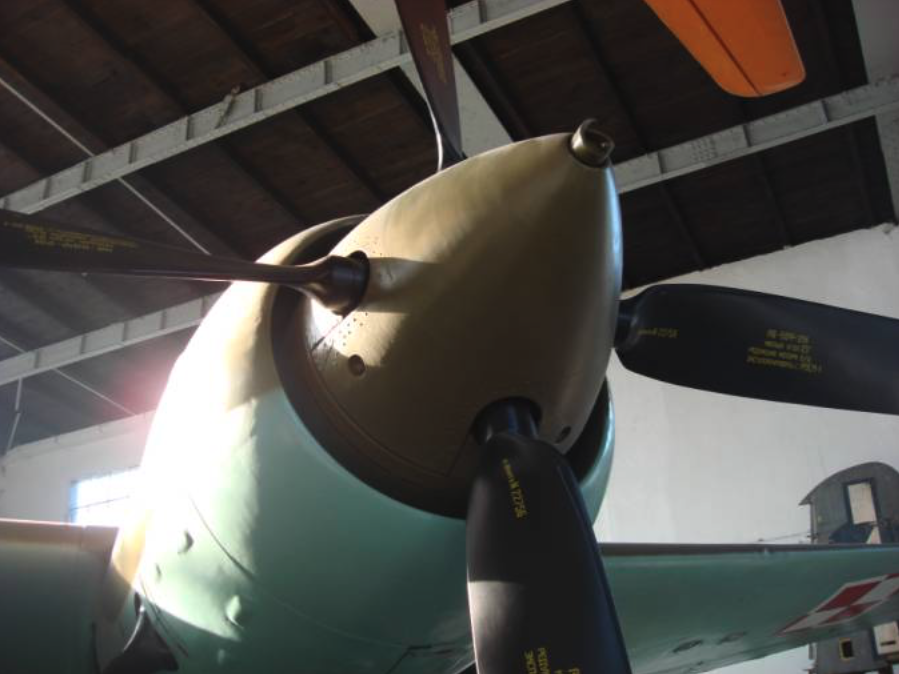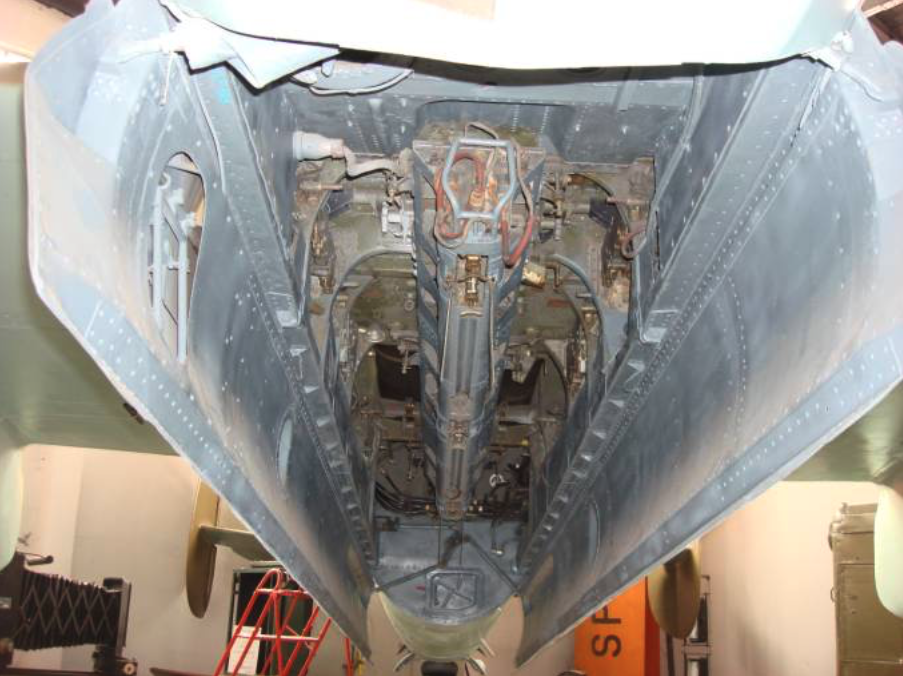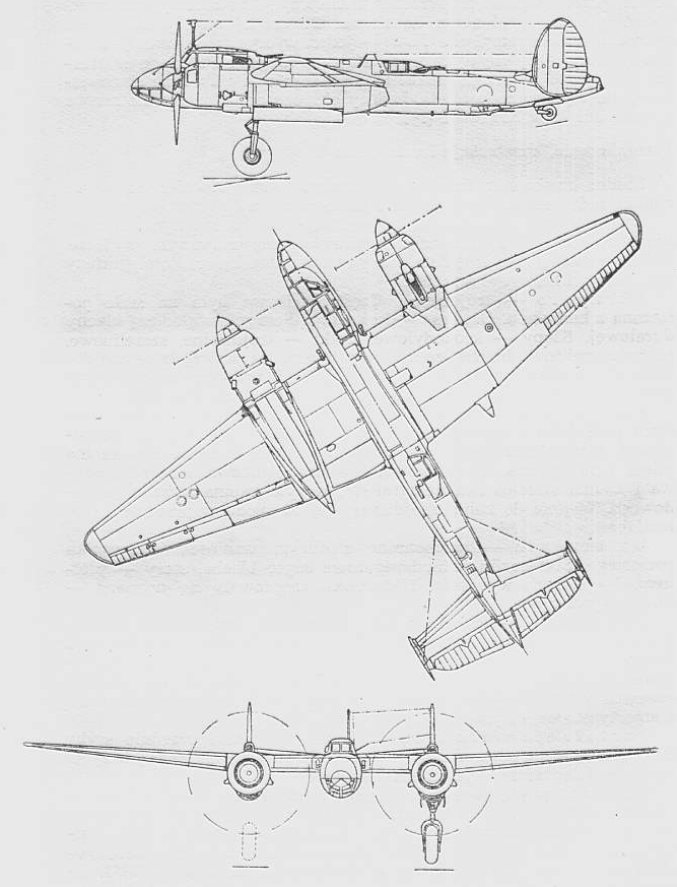Kraków 2010-01-28
076b Section 1949-10-01
Tupolew Tu-2 / UBT
Poland
Medium bomber.
History
History Tu-2
In the second half of the 1930s in the CCCP, as part of a political purge, many talented designers were imprisoned. But the impending threat of war made Stalin decide to use their knowledge and abilities. He organized prison construction offices in the Lubianka prison. First for Petlakow, then for others, including Andrei Nikałajewicz Tupolev. The Tupolev office was established in the spring of 1939. Andrey Tupolev was ordered to build a diving bomber, and the deadline was very short. NKVD constantly monitored the progress of work, while controlling the design with the adopted schedule.
The crew of the new aircraft were to be a pilot and two on-board shooters. The aircraft was codenamed "103" and this codename was used in ciphertexts in the Kremlin. In the office, the aircraft was designated ANT-58, because it was the next construction of this team. But the development of events on the fronts of World War II and the new experience gained caused that Stalin ordered to extend the future capabilities of the bomber also to attacks from horizontal flight. Petlakov (Pe-2) has already worked on the classic diving bomber. In other words, Andrei Tupolev was now to develop a front bomber capable of bombing in various configurations.
The Russians received many valuable comments from the Germans. After all, German-Russian friendship flourished at that time. The Russians even received individual copies of German latest aircraft. The authors write in many publications that the work progressed quickly. But at that time 12 months for project approval was a very long period. Andrey Tupolev, being a perfectionist, sought to build a world-class bomber. Information obtained from friendly Germans often forced to redesign already developed components. In March 1940, the bomber project was approved for implementation.
The bomber prototype, as ANT-58, was built on October 3, 1940, and made its first flight only on January 29, 1941. The flyers were experimental pilot M. A. Niuchtikow and engineer W. A. Miruca. Two 12-cylinder AM-37 in-line engines with 2 x 1 034 kW (2 x 1 400 HP) were used for the drive. The ANT-58 / "103" aircraft was made in one copy.
The results of flight tests and tests of the ANT-58 aircraft and the comments of the army led to a significant redesign of the aircraft. Using the conclusions and suggestions, the Tupolev team developed a newer version, which was designated ANT-59 and codenamed "103 U". The crew was increased by a fourth member – navigator. The fuselage in the front and middle parts was significantly rebuilt. Changes were introduced in avionics equipment and armament.The ANT-59 aircraft was flown on May 18, 1941, and comprehensive factory tests were completed in July 1941. Attempts were positive. The aircraft reached a maximum speed of 610 km / h. Other parameters were also high and matched other world constructions.
At that time, a war began between friends, Germans and Russians. Therefore, ANT-59/103 U had to be put into serial production. The problem, however, is that the factory producing AM-37 engines has completely switched to the production of AM-38 engines intended for driving Il-2 stormtroopers, and these aircraft were given priority in production. Though there were no goals for ANT-59 at the beginning of this conflict, and older Pe-2 bombers performed well. In order not to waste their work, the designers decided to reach for completely different aircraft engines. Their attention focused on the stellar, air-cooled, good M-82 engine, which has its roots in the American design. The new design has been designated ANT-60 / "103 W". M-82 engines had 2 x 978 kW (2 x 1 330 HP). With the new engines, the aircraft was flown on December 15, 1941, and the pilot was the flyer M. P. Wasajakin. The tests were completed in the summer of 1942, but as early as February 1942, production of a pre-production series of 40 machines was launched, and in March 1942 the aircraft was officially marked Tu-2.
A regiment was created on the basis of new aircraft, and its commander was Major M. P. Wasajakin, the same who carried out the flight. In September 1942, the regiment was transferred to the Kaliniński front and joined the 3rd Air Army. Active combat operations began here. Planes dealt numerous and effective blows to the enemy. 1,000 kg bombs were often used. It was then the only Soviet bomber capable of carrying such heavy bombs. Positive comments about the aircraft came from the front to the design office. Good speed and good range were confirmed, as well as the possibility of returning to the airport with one engine running.
In the difficult winter of 1942 for the Russians, Stalin did not order to continue producing Tu-2 aircraft. On the contrary. He ordered to suspend any preparations for further production, and to begin construction of Yak-7 fighters at the factory.
However, Tupolev’s office was not idle. Received an order to improve the Tu-2 aircraft design; extend the life of the airframe, increase survival in battle and reduce production time. As a result of the work undertaken, production time was reduced by 20%. Installations have been simplified. Solutions were used to increase the aircraft’s resistance to bullet hits. Newer engines have also been used.
The new ANT-61 prototype made its first flight on August 26, 1943. State trials were completed in mid-December 1943, and plant No. 23, located then behind the Urals, began serial production of Tu-2 under the designation Tu-2 S.At the end of 1943, Tu-2 S aircraft took part in the fighting on the Eastern Front; voroneksim and steppe. In 1944, new regiments were created on the basis of newly built machines, followed by the 6th Bomber Corps. This corps took part in the fighting in the northeastern Borderlands of the Polish-Lithuanian Commonwealth, forcing the Oder, the Berlin operation, and in August 1945, it was directed to the Far East.
The aircraft that was late in the fight did not actually play a decisive role. It was practically not used to attack from a dive flight. By 1945, factory No. 23 had built about 800 Tu-2 S aircraft in 43 series. Then production was taken over by factory No. 166 in Moscow, which began production at the end of 1944. By 1947, 2,527 units were built.
Tu-2 aircraft built after the war differed from the previous ones in a few significant changes; New avionics equipment. The ice protection installation has been introduced. The back of the hull was metal, not wooden. The wing construction has been strengthened. Two, not one spotlight was installed under the wings. The pilot’s cabin has been enlarged. The glazing of the bottom shooter and top shooter positions has been changed (from 51 series). Top gunner positions (from 45 series), bottom gunner positions (from 50 series) and navigator cabin (from 48 series) have been improved. Mounted handles for easy movement on the wing (from 50 series). A walkway was installed on the right wing (from 51 series). Main landing gear wheels changed (from 51 series). Metal lobe ends instead of wooden (from 51 series). New 4-blade AW-9WF-21K propellers instead of the existing 3-blade AW-5W-167 (from 60 series). New propeller hubcaps were used. Large dust filters have been introduced at the carburettor inlets (from 61 series). An automatic machine for removing the aircraft from diving flight and aerodynamic flaps were introduced. However, this system was abandoned due to the cessation of attacks from a dive flight.
Tu-2 planes were on CCCP equipment from 1942 to 1955. After the war, first in Europe and then in the Far East, the Russians handed over a lot of machines to new subordinate countries, including Poland. Tu-2 was used in Bulgaria, Romania, Hungary, China and Poland.
Tu-2 in Poland.
In October 1949, the first copies of the Tu-2 S went to the equipment of the 7th SPLBN (Independent Air Regiment of Diving Bombers), which was stationed at Lawica Airport. It is likely that Poland received 4 copies of these machines, and a little later 4 more, which allowed retooling of one squadron, which has used Pe-2 planes so far. These 8 planes are not enough for one squadron, but they were supplemented by UBT school planes (UTB-2). Training on Tu-2 aircraft began in January 1950. Personnel with commander (colonel pilot Szczepan Ścibor) were trained as the first. The aircraft had nb; 1, 2, 3, 4, 5, 6, 7, 9, which had different serial numbers. The squadron also received UTB aircraft, specially adapted for training, both in pilotage and pilotage with no ground visibility, and for night flights.
The first public show of Tu-2 S aircraft took place on May 1, 1950 in Warsaw. Tu-2 opened the air part of the military parade, which flew over the grandstand at 10; 20. He was piloted by Colonel Włodzimierz Gawryłow, and two Yak-9 P fighters flew in. Then there were five Il-10 aircraft followed, followed by five Tu-2, whose leader was the crew in the squad; pilot Zygmunt Michnowski, navigator Mr. Gobis, and gunner Mr. Hinc.
On 20.08.1950, Warsaw society at Okęcie could admire three Tu-2 attacking a dummy target at the airport.
In Poland, there are no Tu-2 aircraft crews in dive flight attacks, unlike Pe-2. This was also the reason for changing the name of 7 SPLBN to 7 PLB. However, the aircraft could fly at night, which the Pe-2 could not do due to the weaker avionics equipment. As in the case of Pe-2 bombers, Tu-2 planes were used for photographic reconnaissance flights and flights for 30 PL MW.
As a result of the Korean war, the Russians decided to convert the Polish military units much faster into turbojet-powered aircraft, including bombers. IL-28 bombers appeared on the horizon, so further supplies of Tu-2 were suspended, which were to completely replace Pe-2. Some Tu-2 machines that still have a large resource have been decided to be sent for auxiliary and special purposes. This, among others, formed the towing unit of shooting sleeves. Place of station Słupsk Airport. The machines left service in 1957.
One of the copies, according to the design of the Air Force Institute of Technology, was adapted for training in launching a catapult chair used in Lim-1/2 fighter aircraft. This Tu-2 was produced in 1947. The aircraft was rebuilt around 1954 at Lotnicze Zakłady Remontowe. The new station was installed in the place of the Soviet gunner. The plane found its way to the school in Dęblin. He was used to train many pilots who could get acquainted with the feelings and sensations accompanying this unique practice. The plane was publicly shown during the Central Celebration of the Aviation Day on August 26, 1956, at Okecie. Captain Kazimierz Dull fired from the Tu-2 aircraft flying at an altitude of 1,000 m, who, after the arc, was off the plane, separated from the seat and landed on a parachute. The armchair also dropped on another parachute. This aircraft was then exhibited at the static exhibition lasting until September 9, 1956.
In August 1964, this specimen landed at the no longer operated Rakowice-Czyżyny airport. He joined the exhibits of the then Aviation Exposition Center, transformed into the Museum of Aviation and Astronautics, and after years into the Polish Aviation Museum. The Tu-2 aircraft from MLP in Czyżyny is one of the most valuable exhibits in Polish collections, but not the only one. The original Tu-2 bomber is presented at the Polish Army Museum in Warsaw. These are the only two preserved copies.
UBT aircraft in Poland.
Along with the delivery of Tu-2 S aircraft to Poland, one UBT aircraft was also delivered in October 1949 for training. In total, 6 machines went to Poland. They were used both at 7 PLB at Ławica Airport and at the school in Dęblin. The aircraft was structurally based on Tu-2, but had several significant changes. First of all, the forward part of the hull was extended forward. The cabin has become much larger. The whole front was glazed. The booth of the Soviet-gunner is completely glazed. The lower shooting position was liquidated. Mobile machine guns were not mounted on the aircraft. Airplanes had side numbers among others; 21, 23, 24, 27.
Written by Karol Placha Hetman
Kraków 2010-01-28
076b Section 1949-10-01
Tupolew Tu-2 / UBT
Poland
Medium bomber.
Construction
Construction Tu-2
The Tu-2 is a medium front bomber. Adapted to attack from horizontal flight and diving. Twin-engine, 4-person, with landing gear retractable. Classic system with a double vertical tail.
Three-part wings. The central part is permanently connected to the engine hull and nacelles. Metal construction, although initially with wooden and canvas elements. Cover made of smooth duralumin sheet. Crocodile type flaps. Three-part shuttlecocks, slotted, partly covered with canvas. On the right aileron, a balance flap. Two retractable headlights under the right wing.
Half-shell structure fuselage. Based on 4 girders, several strong stringers and numerous frames. Initially, a wooden tail structure. Working cover made of duralumin sheet. The front cabin was occupied by a pilot and a navigator. In the middle there was a bomb chamber, a fuel tank and a gunner’s cabin. Behind the bottom shooter. The crew was protected by armor plates from 6 mm to 20 mm thick.
Self-supporting formation in the H system with a large elevation of the horizontal tail. Covered with duralumin sheet. Canvas covered rudders. Balancing flaps are mounted on the rudders.
Classic triple chassis with tail wheel. One-leg main chassis with strut with wheel on fork, retractable into nacelle behind engines. Hydraulic retraction system. Emergency compressed air release system. Wheels with low pressure pneumatics capable of using the ground DS. Oil-air shock absorbers. The tail wheel is also hydraulically retractable into the hull.
De-icing system was used on aircraft built after 1944. Propeller blades and windshields were sprayed with spirit. The leading edges of the wings and the tail are de-iced with a mechanical system. A rubber cap with an internal channel was used. Blowing air into the channel caused a slight swelling of the rubber, which led to ice crushing.
Avionics
Two radio stations; the first type RSB-5 for communication with SD. Second for communication with other planes and with the ground. Radio half-compass type RPKO-2 B or RPKO-10 M. Later they were replaced by an automatic radio compass ARK-5. Radar identifier SCz-3 M. Radio altimeter RW-2. SPUF-4 on-board telephone.
Photographic equipment.
The equipment is installed on the plane depending on the needs. It consisted of a NAFA-19 and AFA-1M camera for daytime photos or a NAFA-35/50 camera for nighttime photos.
Engins Tu-2
Initially, the drive was water-cooled 12-cylinder in-line engines – AM-37 with 2 x 1 034 kW (2 x 1 400 HP).
Then the star, air-cooled M-82 had a power of 2 x 978 kW (2 x 1 330 HP).
Star, air-cooled ASz-82 NW with 2 x 1 250 kW (2 x 1 700 HP).
Star-cooled, air-cooled ASz-82 FN with 2 x 1 361 kW (2 x 1 850 HP). Other publications give 2 x 1 379 kW (2 x 1 850 HP) and continuous power 2 x 1 460 HP. It was the basic engine of the Tu-2 S.
Star, air-cooled ASz-83 with increased power up to 2 x 1 400 kW (2 x 1 900 HP).
3-blade AW-5 W-167A or 4-blade propellers AW-5LW-166B, AW-5LW-188B, AW-9F-21K.
The A. Szewcowa ASz-82 FN engine is a 14-cylinder double star. The engine is air-cooled. Gas-free with direct fuel injection. With a two-stage compressor. With a speed reducer.
NACA covers. AW-9F-21K propellers with 3.60 m diameter and R-9SM-1 speed controller. Daw oil tanks 135 liters for each engine. Starting with the on-board compressor located behind the right engine. Fuel tanks with a total capacity of 2,800 liters in the hull, center wing and external parts of the wings. Self sealing tanks. The empty space above the fuel is filled with flue gas to prevent explosion.
Armament Tu-2
The wings contained two 20mm SzWAK fixed cannons, operated by a pilot. Stock of ammunition, 150 pieces per cannon.
3 mobile machine guns. Initially, SZKAS cal. 7.62 mm, then UB cal. 12.7 mm. Two upper UBT types. A navigator with 170 bullets, a gunner with 250 bullets. Lower UBK km of the lower gunner with 350 bullets.
Bomb chamber and external nodes; standard 1,000 kg bombs. Overloaded 2,000 kg bombs. With a limited fuel supply of 3,000 kg of bombs.
Data T-T Tu-2
- Span 18.86 m
- Length 13.80 m
- Height 4.56 – 4.84 m
- Bearing area 48.80 m2
- Curb weight 8 404 m
- Total weight 10 360 – 11 400 kg
- Maximum weight 11 450 – 12 360 kg
- Load weight 3000 kg
- Maximum speed 550 km / h
- Maximum speed at sea level – 482 km / h (509 km / h with 10 minutes recharge); on the ceiling of 5,400 m – 547 km / h
- Cruise speed 442 km / h
- Climb speed to 5000 m: 9 min 30 seconds
- Climb speed 11.7 m / s
- Maximum range 2,100 – 2,200 km
- Ceiling 9,000 – 9,500 m
- Run up 485 – 640 m
- Take-off speed 675 – 1 060 m
- A crew of 4 people
Written by Karol Placha Hetman
Kraków 2010-01-28
076b Section 1949-10-01
Tupolew Tu-2 / UBT
Poland
Medium bomber.
Tally
There are no complete data regarding Tu-2 S and UBT aircraft used in the Polish Army.
There were probably 8 copies of Tu-2 aircraft. The aircraft had nb; 1, 2, 3, 4, 5, 6, 7, 9. There were probably 5 units of UBT aircraft. The aircraft had, among others, nb; 21, 23, 24, 27.
Written by Karol Placha Hetman

